Nav

The CEGB
Following the Electricity Act of 1957, the CEGB (the Central Electricity Generation Board) was established in 1958 as the national authority responsible for generating and transmitting electricity in England and Wales, which it remained until the 1990s.
Establishing widely available electricity required enormous amounts of infrastructure to be built, which would have a significant impact on the country’s rural contexts.
These are CEGB pamphlets kept in the museum’s library.
MERL Library
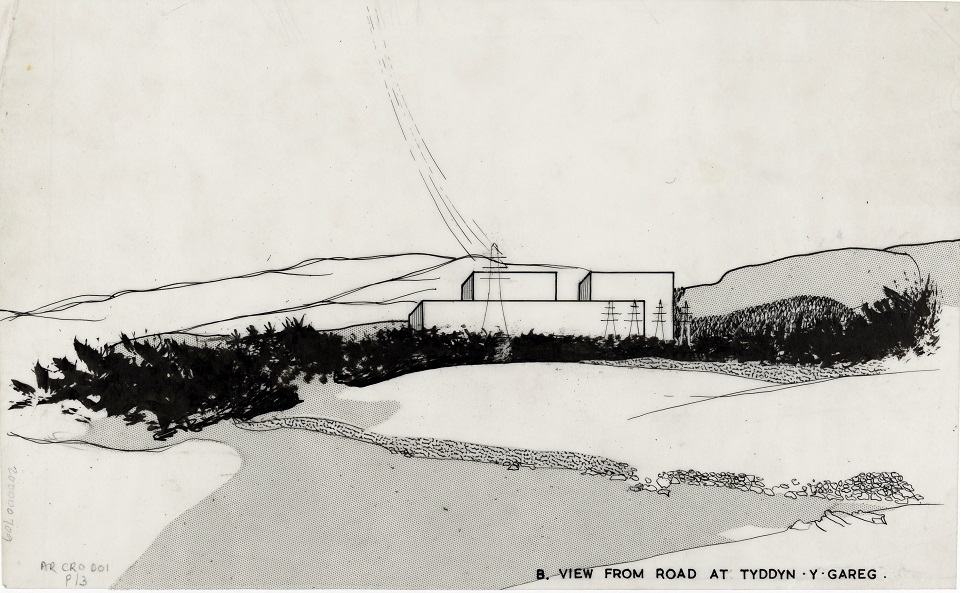
Trawsfynydd nuclear power station
During the ten-year period that followed the Electricity Act of 1957 fifty-five new power stations were built in England and Wales.
The appointment of Sir William Holford as a member of the board of the CEGB in 1958 ushered in a period of collaboration between the CEGB and the Institute of Landscape Architects. Sylvia Crowe was appointed as Landscape Consultant for Trawsfynydd in 1959, while she was president of the Institute.
In ‘Landscape of power’ (1958) Sylvia Crowe wrote about the great transformations that were taking place in the world of industry and power generation and how it would inevitably impact on the country’s landscape and the environment. Crowe was not a preservationist and was enthusiastic about the new opportunities that were opening up and leading to future wealth and increased efficiency.
MERL Archive
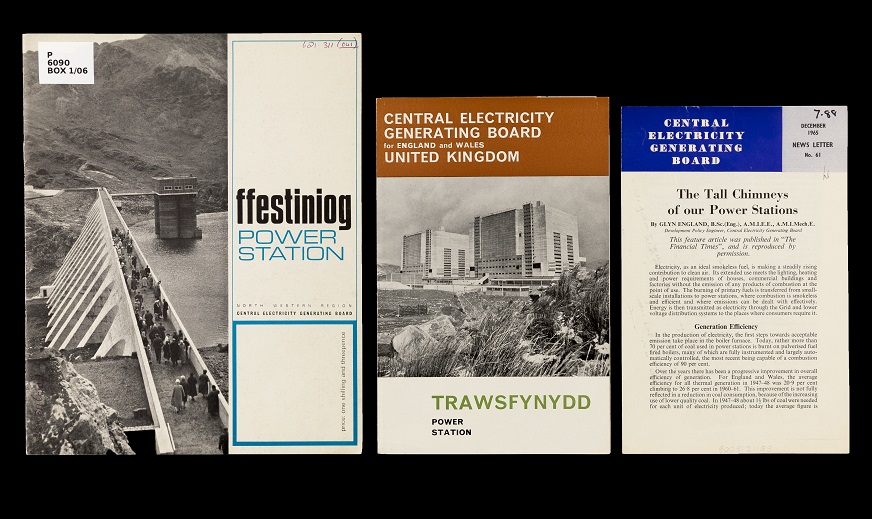
The visual impact of power stations
The 1957 Electricity Act included an element of consideration for the landscape and the impact of power stations on the natural beauty of the countryside. The collaboration between Landscape Architects and the CEGB was instrumental in ensuring that this balance was reached and the impact kept to a minimum.
Trawsfynydd in Wales was the first inland nuclear power station and provided Sylvia Crowe with a subject to test her theories about reducing visual impact. Existing woodlands were enlarged, new trees planted in the surrounding areas and the level of the switching station was lowered by moving a considerable amount of earth.
MERL Library
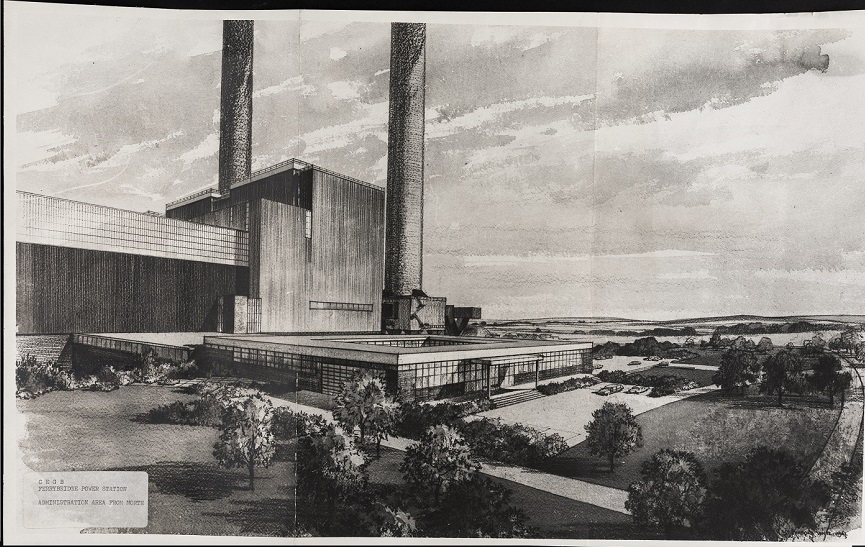
Ferrybridge power station
During the 1960s Milner White worked on the landscaping of Ferrybridge, a coal fired power station in West Yorkshire, among other industrial projects undertaken by the practice.
The Milner White dynasty had started more than a century earlier, when Edward Milner (1819-1884) was appointed gardener at Chatsworth’s having been apprentice to Joseph Paxton.
In 1960 Leslie Milner-White, who was then President of the Institute of Landscape Architects, entered into a partnership with Frank Marshall. Marshall continue to run the London practice until 1995 and, after its closure, donated the archives to the MERL.
MERL Archive
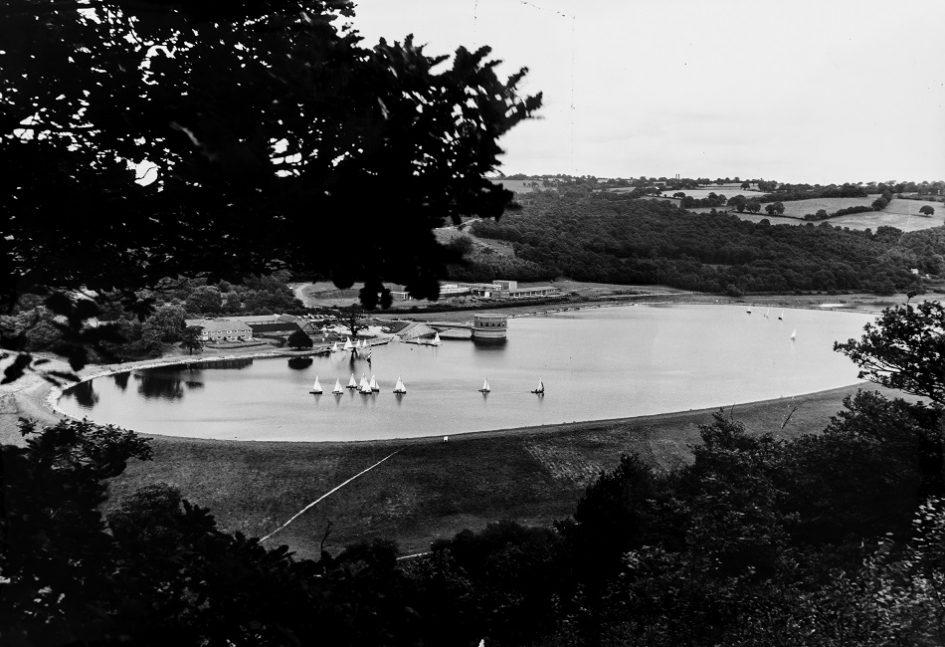
Trimpley Reservoir
In 1962 Brenda Colvin was commissioned by the City of Birmingham Water Department to work on the Trimpley Reservoir in Worcestershire. The project presented its challenges, as the reservoir provided ‘a threat to the existing calm and rural character’ of the surrounding area.
Colvin addressed the challenge by using a variety of methods, including the modelling of a natural-looking, irregular landform (by adding topsoil to the banks, which also provided more space for tree planting), the preservation of existing plants, and the creation of a pond as a small natural reserve.
Fishing and boating on the reservoir added to the popularity of the site.
MERL Archive
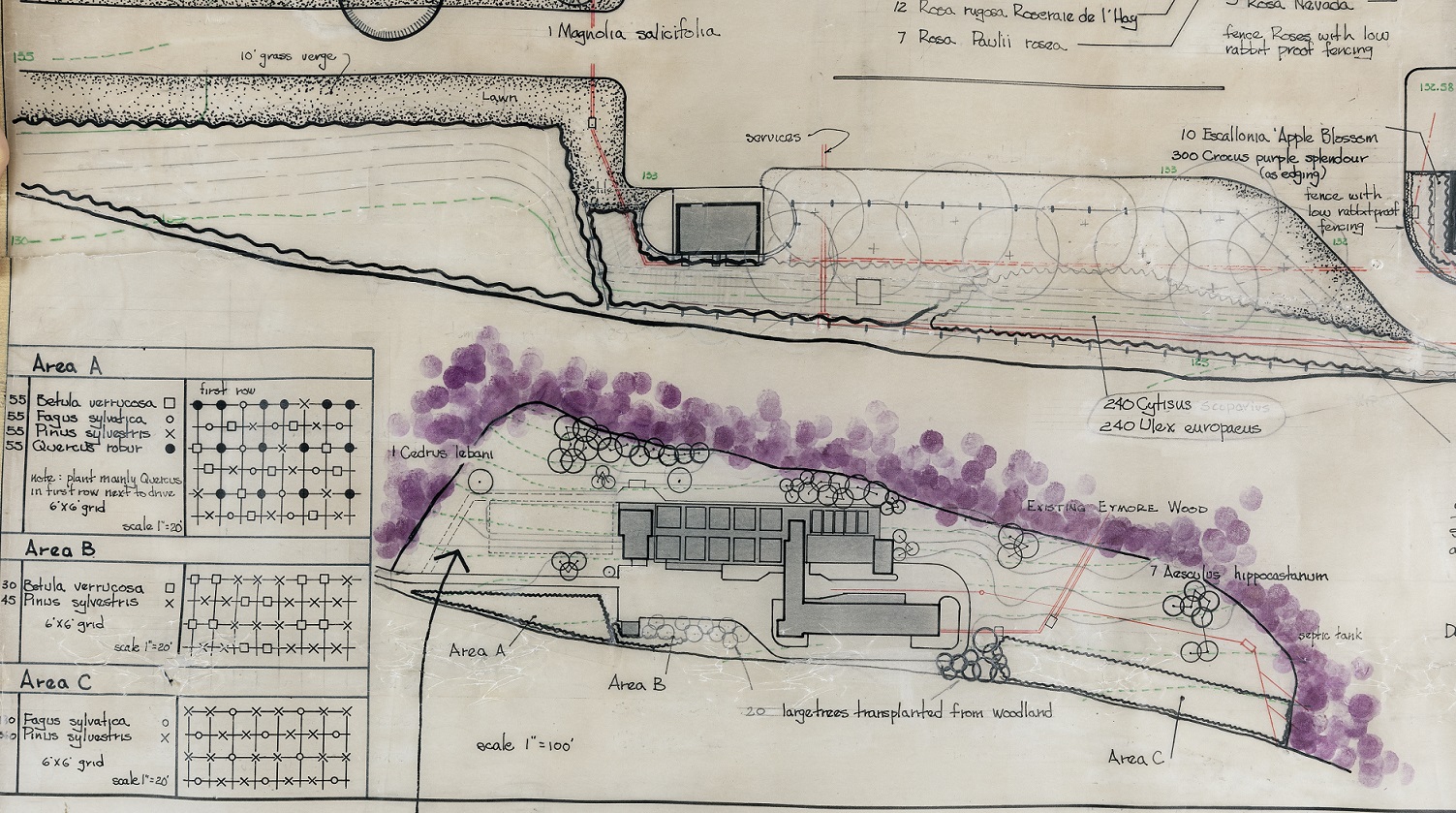
Brenda Colvin
Brenda Colvin paid particular attention to the choice of plants and trees, as shown in the section of this drawing for the Trimpley Reservoir and its inset.
In her youth Colvin attended Swanley Horticultural College to study gardening and market work and subsequently trained with Madeline Agar, author of ‘Garden Design in Theory and Practice’ (1911). By 1939 Colvin had advised on about 300 gardens and in 1947 her ‘Land and landscape’ came out, where she expressed her anxiety about industrial landscape.
MERL Archive
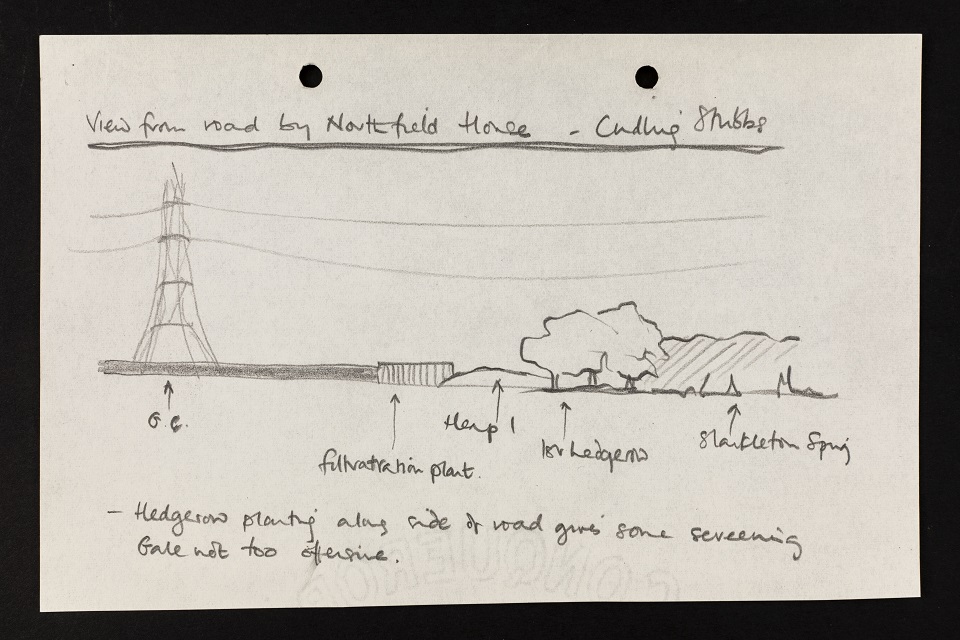
Gale Common
Brenda Colvin worked on numerous CEGB projects and designed industrial landscapes around several of the new generation of power stations, including Stourport (from 1952), Drakelow (from 1963), Rugeley (from 1963), and Eggborough (from 1961).
In 1962 the CEGB appointed Colvin to work on a pioneering project, which later became know as Gale Common and involved the disposal of pulverized fuel ash (PFA or ‘fly-ash’) waste from Eggborough and Ferrybridge coal-fired power stations.
Colvin’s approach consisted in using the fly ash to raise the land that had subsided as a result of coal mining and return it to productive agricultural use. The project went through 3 different phases and was completed in 2003.
MERL Archive
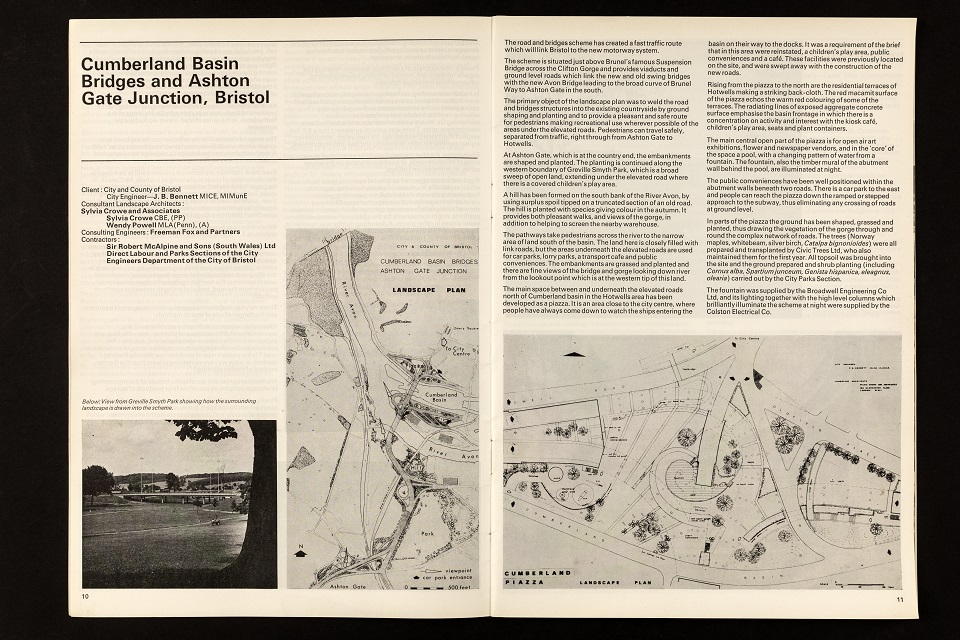
Road infrastructure
The Journal of the Institute of Landscape Architects, as it was know between 1945 and 1970, often addressed the dichotomy and the links between industry and landscape. In 1964 the Institute organised a touring exhibition on ‘Industry and landscape’ and throughout the 1960s the journal dedicated special issues to ‘power stations’ and ‘roads’ and other types of infrastructure.
This is from the November 1967 issue devoted to ‘Roads’ and focuses on various projects, including Sylvia Crowe’s Cumberland Basin in Bristol. The MERL owns the original drawings for this project.
MERL Library
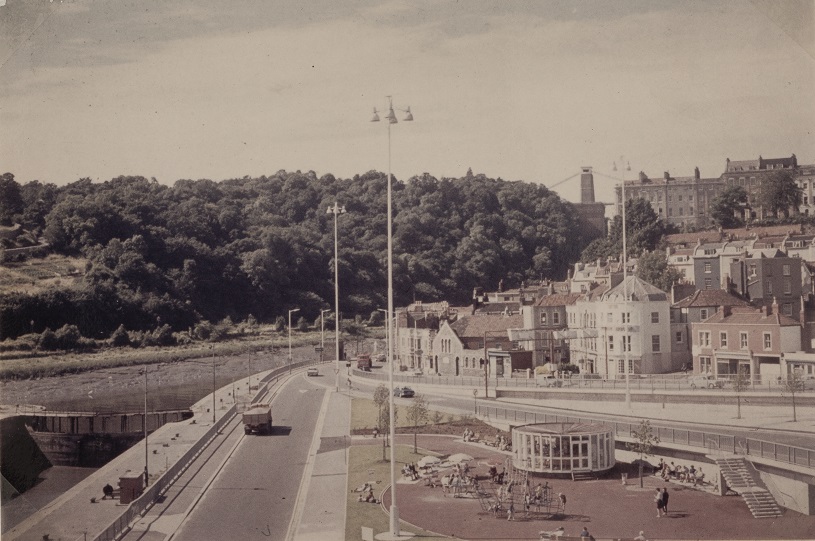
Cumberland Basin Piazza
Crowe designed an innovative pedestrian area in the space underneath the elevated roads, north of Cumberland Basin and Bristol, a piazza, which included a play area, a park surrounded by mature trees and a landscaped walk. Historically, this had been an area where locals congregated to walk along the river.
It provides a beautiful example of how a powerful and necessary infrastructure can be combined with an aesthetically pleasing and salubrious space, how cities can literally be made to work on different levels.
Since its creation in 1964 the piazza has seen various transformations, most recently the addition of a cycle path, which links to the Bristol’s larger cycling network.
MERL Archive

Belfast Urban Motorway
In 1964 the Belfast Corporation and the Ministry of Commerce agreed to build a ring road round the city centre, which would be mainly elevated with motorways radiating outwards to relieve the existing main arteries.
In 1965 the London consultants, R. Travers Morgan and Partners, were appointed to design and supervise the construction of the scheme. Nine yeas later Travers Morgan were appointed to undertake a Review of the Transportation Strategy for the Belfast Urban Area.
These drawings are part of the 1974 Review and include plans and sections for the landscaping of York Street highlighting details for retaining walls and noise barriers, bridge abutments and parapet fence connections.
MERL Archive
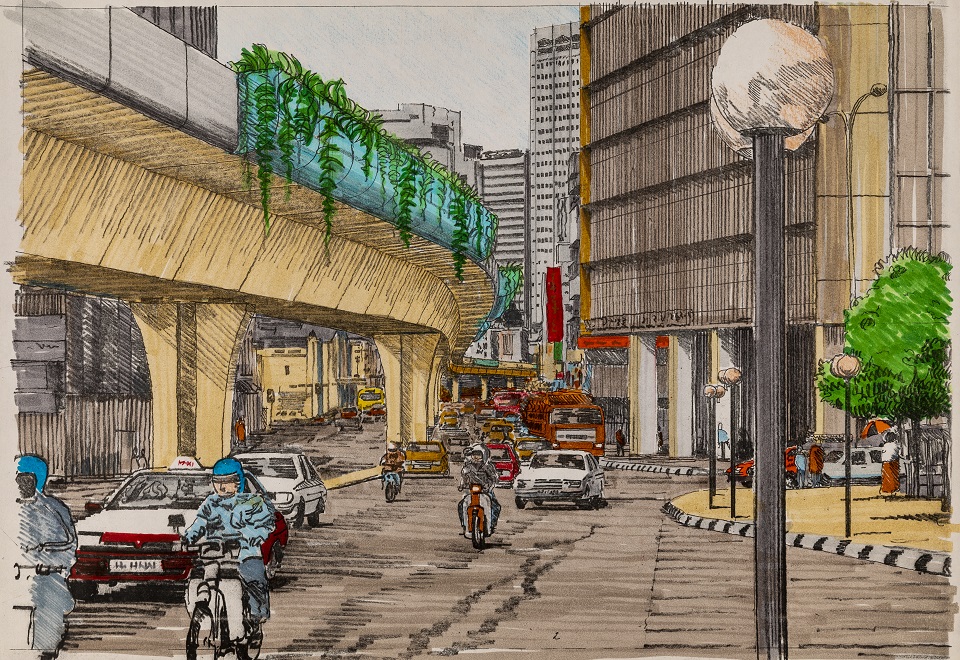
Travers Morgan and urban planning
Travers Morgan undertook road and infrastructure projects both in the UK and abroad, as shown in these colourful drawings of the Kuala Lumpur city traffic.
The lush tropical vegetation provides an additional feature to the urban landscape of the Malaysian capital with its noisy traffic and multilevel transportation system.
MERL Archive
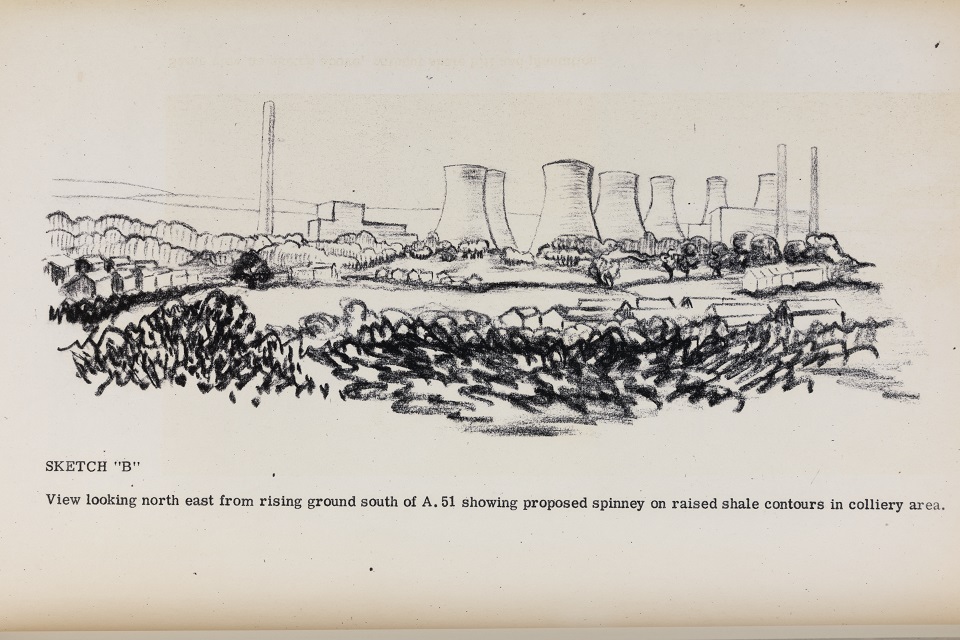
Landscaping industrial sites
The MERL has a rich collection of drawings, photographs, plans and sketches of industrial commissions undertaken by members of the Landscape Institute.
This is a view of Rugeley ‘B’ Power station by Brenda Colvin, who sealed her powerful legacy with some words of hope in the later edition of Lands and Landscape (1970):
“Our power stations, oil refineries, factories and water-works must take their place, in time, with the pyramids, castles and temples of the past.”
MERL Archive